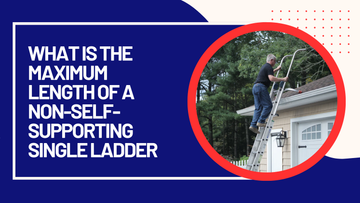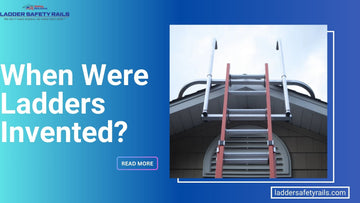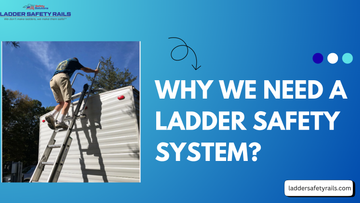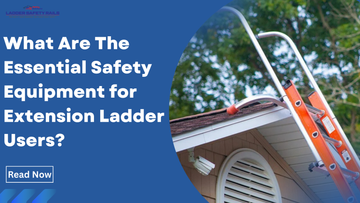
Ladders are essential tools for various tasks, from home improvement projects to professional construction work. Choosing the right ladder for the job is crucial for both efficiency and safety.
One of the most common questions asked about ladders is: What is the maximum length of a non-self-supporting single ladder? This blog will explore the answer to this question while covering different ladder types, ladder safety, and essential guidelines for selecting the right ladder for your needs.
Types of Ladders: Self-Supporting vs. Non-Self-Supporting
Ladders can generally be classified into two main categories: self-supporting ladders and non-self supporting ladders.

1. What Type of Ladder is Self Supporting?
A self supporting ladder is a ladder that does not need to lean against a wall or structure for stability. It can stand on its own because of its built-in support mechanism. The most common type of self-supporting portable ladder is the step ladder, which has a hinged design that allows for an 'A' shape when opened.
Another variant is the self-supporting extension ladder, which combines the versatility of an extension ladder with the stability of a step ladder. Professionals often prefer an aluminium self supporting extension ladder because it is lightweight, durable, and resistant to rust, making it ideal for both indoor and outdoor use.
2. Non Self Supporting Ladders
A non-self supporting ladder, as the name suggests, requires external support for stability. This category includes single ladders and extension ladders, which must be leaned against a wall or other sturdy structure. These ladders are typically used for tasks requiring access to high places, such as roof repairs, window cleaning, and painting projects.
What is the Maximum Length of a Non-Self-Supporting Single Ladder?
One of the most frequently asked questions is: What is the maximum length of a non-self-supporting single ladder? According to the Occupational Safety and Health Administration (OSHA), the maximum allowable length for a non-self-supporting single ladder is 30 feet. However, for safety reasons, most commercially available single ladders do not exceed 24 feet.
The actual maximum length of a non-self-supporting single ladder depends on its material and design. For example, wooden single ladders are typically limited to 20 feet due to weight and durability concerns, while aluminium self supporting extension ladders or fiberglass ladders can be manufactured at longer lengths due to their strength and lightweight properties.
Ladder Safety System: Ensuring Safe Usage
Ladder accidents are common, but most can be prevented by following proper safety guidelines. Using a ladder safety system can significantly reduce the risk of falls and injuries. These systems often include ladder safety rails, stabilizers, and harnesses to improve user security.
1. Ladder Safety Rails
A ladder safety rail is a crucial component that provides extra support while climbing. These rails help maintain balance, especially when working at greater heights. Some ladders come with built-in safety rails, while others allow the attachment of additional rail systems for enhanced stability.
2. Ladder Safety Tips
Following essential ladder safety tips is necessary to ensure a safe working environment:

-
Inspect the Ladder: Before each use, check for cracks, bends, or missing parts.
-
Set Up on Stable Ground: Always place the ladder on a firm, even surface to prevent slipping.
-
Use the Proper Angle: When using a non-self supporting ladder, follow the 4:1 rule (for every 4 feet of ladder height, the base should be 1 foot away from the wall).
-
Maintain Three Points of Contact: Always have two hands and one foot or two feet and one hand on the ladder at all times.
-
Do Not Overreach: Keep your body centered between the ladder rails to avoid tipping over.
-
Be Aware of Weight Capacity: Every ladder has a maximum weight rating—never exceed it.
-
Avoid Electrical Hazards: When working near power lines, use non-conductive fiberglass ladders instead of metal ones.
-
Secure the Ladder: If working at a high elevation, tie the ladder to a stable structure to prevent movement.
-
Use a Spotter: If possible, have someone hold the ladder base for added security.
Choosing the Right Ladder for the Job:
Selecting the appropriate ladder depends on the task at hand. Here’s a guide to help you decide:
-
For indoor tasks (changing light bulbs, painting walls): A self supporting portable ladder like a step ladder is ideal.
-
For accessing high areas outside (roof repairs, cleaning gutters): A non self supporting ladder such as an extension ladder is suitable.
-
For professional and industrial work: An aluminium self supporting extension ladder offers both durability and stability.
Understanding which ladder is self supporting and what type of ladder is self supporting is essential when choosing the best option for safety and efficiency.
Conclusion:
Knowing what is the maximum length of a non-self-supporting single ladder is essential for ensuring safe and proper use. While OSHA limits single ladders to 30 feet, most are designed up to 24 feet for practical and safety reasons. Selecting the right ladder and following ladder safety tips is crucial for accident prevention.
Using a ladder safety system, including ladder safety rails and stabilizers, can further enhance safety when working at heights. For more ladder safety advice, and advanced safety rail system, visit us at Ladder Safety Rails!
FAQs:
-
What is the maximum length of a non-self-supporting single ladder?
The maximum length is 30 feet, though most are designed up to 24 feet for safety.
-
What type of ladder is self supporting?
A self supporting ladder can stand independently, like a step ladder or self-supporting extension ladder.
-
What is a non-self supporting ladder?
A non-self supporting ladder needs external support, like a wall, for stability, e.g., single or extension ladders.
-
What are ladder safety rails?
Ladder safety rails provide additional support and balance while climbing, ensuring stability at heights.
-
What are key ladder safety tips?
Inspect ladders, use the proper angle, maintain 3 points of contact, and avoid electrical hazards.




